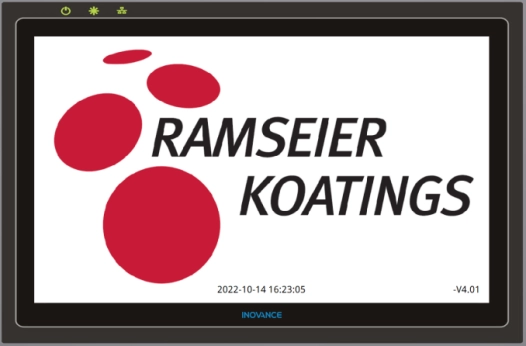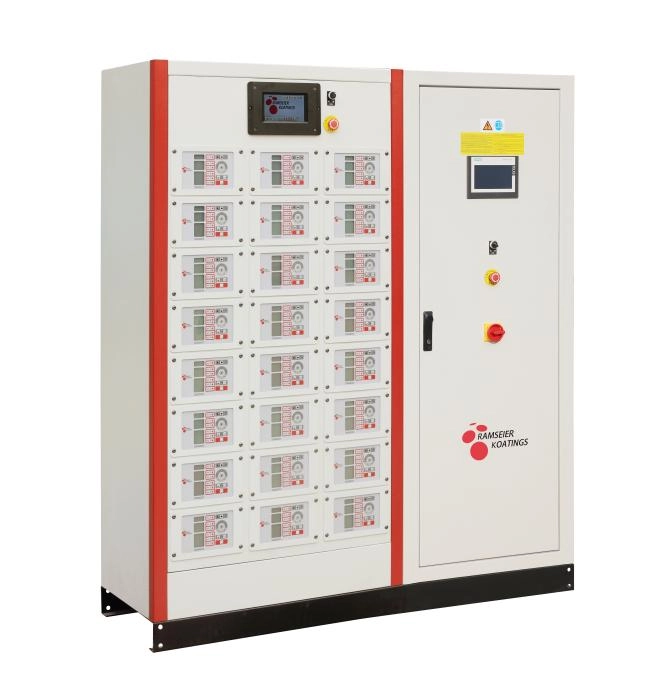Content Menu
● Introduction
● Understanding the Basics
>> What is an Integrated Control System?
>> What is an Advanced PLC System?
● Key Features and Capabilities
>> Integrated Control Systems
>> Advanced PLC Systems
● Flexibility: A Comparative Analysis
>> Flexibility in Integrated Control Systems
>> Flexibility in Advanced PLC Systems
● Comparative Table: Flexibility Features
● Application Scenarios
>> When to Choose an Integrated Control System
>> When to Choose an Advanced PLC System
● Technical Considerations
>> Programming and Configuration
>> Communication and Networking
>> Maintenance and Troubleshooting
>> Security
● Cost-Efficiency and Lifecycle Management
>> Initial Investment
>> Operating Costs
>> Upgrade and Expansion
● Future Trends: Convergence and Digitalization
● Conclusion
● Frequently Asked Questions
Introduction
Industrial automation has evolved rapidly in recent decades, driven by the need for efficiency, safety, and adaptability. At the heart of this evolution are control systems that orchestrate the operation of machinery, processes, and entire plants. Among these, Integrated Control Systems (ICS) and Advanced Programmable Logic Controller (PLC) Systems are two dominant solutions. Both promise reliability and performance, but when it comes to flexibility—a crucial requirement for modern, dynamic manufacturing environments—the debate intensifies. This article provides an in-depth comparison of Integrated Control Systems and Advanced PLC Systems, focusing on their flexibility, strengths, limitations, and suitability for various industrial applications.

Understanding the Basics
What is an Integrated Control System?
An Integrated Control System (ICS) is a comprehensive automation solution that combines multiple control technologies—such as PLCs, Distributed Control Systems (DCS), Human-Machine Interfaces (HMI), and Supervisory Control and Data Acquisition (SCADA)—into a unified platform. ICSs are designed to manage complex processes across large facilities, providing centralized monitoring, control, and data acquisition. Their architecture is inherently modular and scalable, enabling seamless integration of new devices, subsystems, and technologies.
What is an Advanced PLC System?
A Programmable Logic Controller (PLC) is a ruggedized, microprocessor-based device used to automate industrial processes. Advanced PLC Systems refer to modern PLCs equipped with high-speed processors, extensive communication capabilities, and support for sophisticated programming languages and functions. They are often used for discrete control, sequencing, and logic operations, but recent advancements have expanded their capabilities to include process control, safety, and data management.
Key Features and Capabilities
Integrated Control Systems
- Centralized Architecture: ICSs offer a unified platform for control, monitoring, and data management, simplifying system oversight and troubleshooting.
- Scalability: Easily accommodate expansion by integrating additional controllers, I/O modules, or subsystems without major architectural changes.
- Interoperability: Support for multiple communication protocols and standards, enabling integration with diverse equipment and third-party systems.
- Advanced Analytics: Native support for data analytics, reporting, and visualization, enhancing process optimization and decision-making.
- Redundancy and Reliability: Built-in redundancy features minimize downtime and ensure continuous operation in critical environments.
Advanced PLC Systems
- Real-Time Control: PLCs excel at high-speed, deterministic control, making them ideal for applications requiring rapid response.
- Programming Flexibility: Support for multiple programming languages (e.g., ladder logic, structured text, function block diagram) allows customization for specific tasks.
- Robustness: Designed to withstand harsh industrial environments, including temperature extremes, vibration, and electrical noise.
- Cost-Effectiveness: Lower initial investment for small to medium-sized applications compared to large-scale integrated systems.
- Ease of Maintenance: Modular design and diagnostic tools simplify troubleshooting and component replacement.
Flexibility: A Comparative Analysis
Flexibility in Integrated Control Systems
Integrated Control Systems are engineered for adaptability. Their modular and scalable architecture allows for:
- Seamless Expansion: Adding new devices, control points, or subsystems is straightforward, often requiring minimal rewiring or reprogramming.
- Process Modifications: Changes to process logic, control strategies, or system configuration can be implemented centrally, reducing engineering effort and risk.
- Multi-Disciplinary Integration: ICSs can manage discrete, process, safety, and motion control within the same platform, streamlining complex operations.
- Remote and Distributed Control: Support for distributed architectures enables flexible deployment across geographically dispersed facilities.
This flexibility makes ICSs particularly well-suited for industries where processes evolve frequently or where system scalability is a priority, such as oil and gas, chemicals, pharmaceuticals, and large-scale manufacturing.
Flexibility in Advanced PLC Systems
Advanced PLC Systems offer significant flexibility, especially compared to traditional relay-based or hardwired control systems:
- Programmability: PLCs can be easily reprogrammed to accommodate changes in logic or process sequences without physical rewiring.
- Integration Capabilities: Modern PLCs support various communication protocols, allowing integration with HMIs, SCADA, and even cloud-based systems.
- Modular Expansion: Additional I/O modules or communication cards can be added to expand system capabilities.
- Versatility: Suitable for a wide range of applications, from simple machine control to complex process automation.
However, as system complexity and scale increase, the flexibility of PLC systems may be constrained by limitations in memory, processing power, and network architecture. Expanding a PLC system to manage large, distributed processes can require extensive reprogramming and hardware upgrades.
Comparative Table: Flexibility Features
| Feature | Integrated Control System | Advanced PLC System |
| Scalability | High | Moderate |
| Centralized Management | Yes | Limited |
| Multi-Disciplinary Integration | Yes | Limited |
| Programming Flexibility | High | High |
| Remote/Distributed Control | Excellent | Good (with limitations) |
| Integration with Third-Party | Excellent | Good |
| Expansion Effort | Low | Moderate to High |
| Data Analytics & Reporting | Advanced | Basic to Moderate |
Application Scenarios
When to Choose an Integrated Control System
- Large-Scale or Complex Facilities: Plants with multiple processes, extensive I/O points, or distributed locations benefit from the scalability and centralized management of ICSs.
- Frequent Process Changes: Environments where process modifications are common require the adaptability and rapid configuration offered by ICSs.
- High Availability Requirements: Industries where downtime is unacceptable (e.g., power generation, petrochemicals) leverage ICS redundancy and reliability.
- Integrated Safety and Compliance: ICSs can unify process, safety, and environmental controls, simplifying regulatory compliance.
When to Choose an Advanced PLC System
- Small to Medium-Sized Applications: For standalone machines, packaging lines, or localized processes, PLCs offer a cost-effective and robust solution.
- High-Speed Control Needs: Applications requiring fast, deterministic response times (e.g., assembly lines, robotics) are well-served by PLCs.
- Budget Constraints: PLCs provide essential automation capabilities without the higher upfront costs of a full ICS.
- Incremental Upgrades: Facilities looking to automate specific processes or gradually expand automation can start with PLCs and scale as needed.
Technical Considerations
Programming and Configuration
Both ICSs and advanced PLCs support flexible programming, but ICSs often provide more sophisticated configuration tools, simulation environments, and centralized engineering databases. This streamlines project development and lifecycle management, especially for large teams or complex projects.
Communication and Networking
ICSs are designed for extensive networking, supporting a wide range of industrial protocols (Ethernet/IP, Profibus, Modbus, OPC UA, etc.) and facilitating integration with enterprise IT systems. Advanced PLCs also offer robust networking options, but may require additional hardware or software for large-scale or multi-vendor integration.
Maintenance and Troubleshooting
ICSs provide centralized diagnostics, event logging, and predictive maintenance features, enabling proactive management of system health. PLCs offer built-in diagnostics and modular replacement, but troubleshooting may become complex as systems grow in size and interconnectivity.
Security
ICSs often include advanced cybersecurity features, such as user authentication, encrypted communications, and role-based access control. While PLCs are inherently less vulnerable due to their specialized operating systems, increased connectivity (especially in IIoT applications) necessitates robust security measures.
Cost-Efficiency and Lifecycle Management
Initial Investment
- ICS: Higher upfront costs due to complex architecture, software licenses, and engineering effort.
- PLC: Lower initial costs, especially for small-scale or standalone applications.
Operating Costs
- ICS: Economies of scale reduce cost-per-control point as the system expands.
- PLC: Costs can increase rapidly with system size and complexity due to additional hardware and programming requirements.
Upgrade and Expansion
- ICS: Designed for easy expansion and upgrades, minimizing downtime and engineering effort.
- PLC: Expansion may require significant reprogramming and hardware changes, especially in large or distributed systems.
Future Trends: Convergence and Digitalization
The boundaries between ICSs and advanced PLC systems are increasingly blurred as vendors offer hybrid solutions that combine the strengths of both. Modern automation platforms may feature distributed PLCs managed through a centralized engineering environment, or ICSs with embedded high-speed PLC modules for real-time control. The rise of Industrial Internet of Things (IIoT), cloud integration, and advanced analytics is driving the need for even greater flexibility, interoperability, and scalability.
Conclusion
Flexibility is a critical factor in selecting an automation solution. Integrated Control Systems offer superior flexibility for large, complex, and evolving industrial environments, providing centralized management, seamless scalability, and advanced integration capabilities. Advanced PLC Systems, while highly flexible within their scope, are best suited for smaller-scale or high-speed applications where cost, simplicity, and robustness are paramount.
The choice between the two depends on the specific requirements of the application, including scale, complexity, budget, and future expansion plans. As automation technology continues to evolve, the integration of ICS and PLC capabilities will further enhance the flexibility and performance of industrial control systems.
Frequently Asked Questions
1. Can advanced PLC systems be integrated into an Integrated Control System?
Yes, many modern ICS platforms are designed to incorporate advanced PLCs as subsystems, leveraging their real-time control capabilities while benefiting from centralized management and scalability.
2. Which system is more suitable for rapid process changes?
Integrated Control Systems are generally better suited for environments where process changes are frequent, as they allow centralized and streamlined reconfiguration.
3. Are ICSs always more expensive than PLC systems?
ICSs typically have higher initial costs, but for large-scale or complex operations, they can be more cost-effective over the system's lifecycle due to easier expansion and centralized management.
4. How do PLCs handle data analytics compared to ICSs?
PLCs offer basic data logging and reporting, but ICSs provide advanced analytics, visualization, and integration with enterprise IT systems, enabling deeper process insights.
5. What are the main limitations of PLC systems in large-scale applications?
PLCs may require extensive reprogramming and hardware upgrades to accommodate system expansion, and their decentralized nature can complicate management as the system grows.

[1] https://www.plctable.com/plc-vs-ipc/
[2] https://automationelectric.com/plc-vs-relay-based-control-systems-making-the-right-choice-for-industrial-applications/
[3] https://www.plctechnician.com/news-blog/important-differences-between-plc-and-dcs-0
[4] https://www.automate.org/motion-control/editorials/how-the-capabilities-of-motion-controllers-enable-greater-flexibility-compared-to-plcs
[5] https://www.linkedin.com/pulse/why-you-should-upgrade-from-conventional-control-system-stephen-nidea
[6] https://blog.csdn.net/m0_37818883/article/details/104782344
[7] https://industrialautomationco.com/blogs/news/plc-vs-dcs-which-control-system-suits-your-manufacturing-needs
[8] https://www.acm.org/binaries/content/assets/education/it2017_chinesetranslation.pdf
Hot Tags: China, Global, OEM, private label, manufacturers, factory, suppliers, manufacturing company










































 .
. 